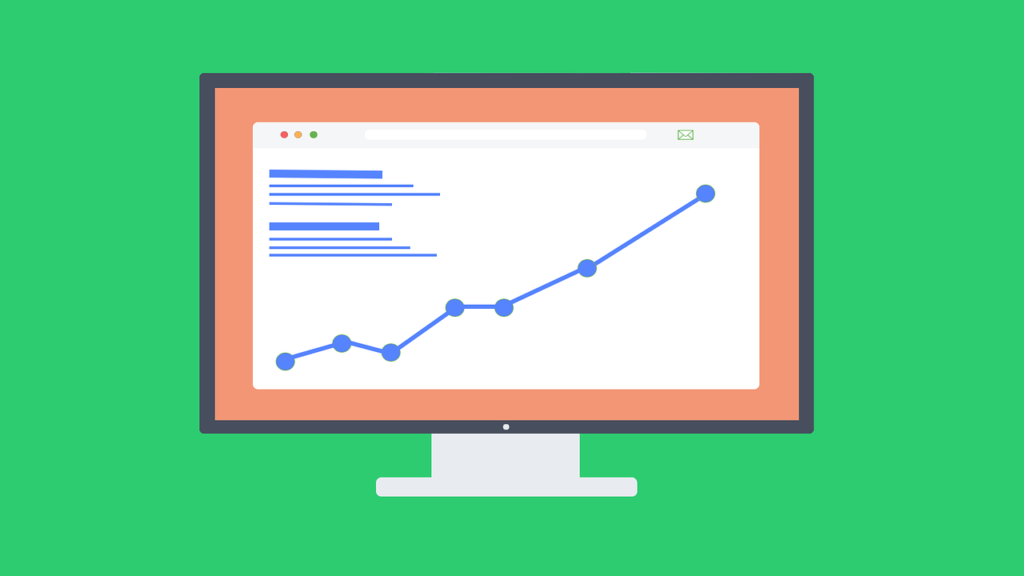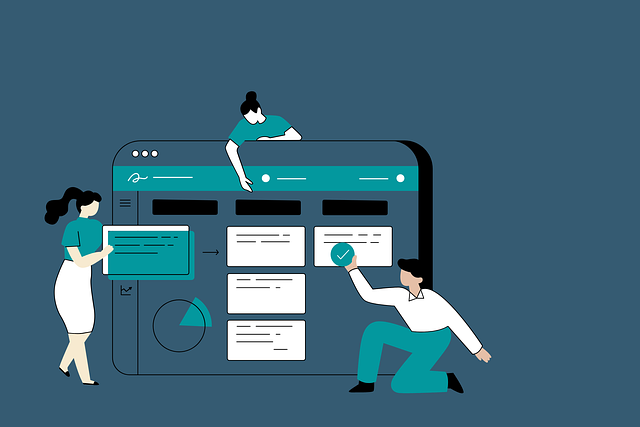Driving organic traffic to your landing page is a win in itself, but true success lies in what comes next—turning that traffic into conversions. When users arrive on a page through SEO, they already have some level of interest or intent. Your goal is to optimize that interest, guiding them toward taking action. This is where A/B testing becomes a powerful tool. By systematically testing different elements on your landing page, you can gain invaluable insights into what works best for your audience, maximizing conversions without overhauling your entire strategy.
This article will walk you through an advanced approach to A/B testing for SEO landing pages, exploring tactics and strategies that go beyond simple button color or headline testing. From understanding user intent and optimizing key page elements to tracking metrics that matter, we’ll cover everything you need to know to refine and supercharge your landing pages.
Why A/B Testing Matters for SEO Landing Pages
Turning Traffic into Leads
SEO brings users to your page, but what happens next depends on how well your landing page aligns with their needs. Effective A/B testing ensures that you’re continuously refining the experience to make it more engaging and relevant. By testing various elements, you’re able to eliminate guesswork and use real data to determine what encourages visitors to take action.
Imagine you’re offering a free trial for software on your landing page. By testing different CTA wording—such as “Start My Free Trial” versus “Try It for Free”—you can learn which version resonates best with users. A single tweak can lead to significantly higher conversions, making the most of your SEO-driven traffic.
Minimizing Bounce Rates and Improving SEO Metrics
Google uses metrics like bounce rate, dwell time, and click-through rate (CTR) to assess page quality. If users consistently leave your page without taking action, it can impact both conversions and SEO performance. Effective A/B testing can reduce bounce rates and improve engagement, signaling to search engines that your page is valuable and relevant, which may positively affect rankings over time.
For example, testing a shorter form or a more engaging headline could keep users on the page longer, lowering your bounce rate and improving user engagement metrics. These improvements indirectly boost your SEO performance, creating a cycle of better rankings and higher conversion rates.
Step 1: Defining Clear Goals for Your A/B Tests
Choose Metrics That Matter for Conversions
Before diving into A/B testing, define what success looks like for your landing page. Conversions come in various forms, from filling out a form to making a purchase. Choose specific metrics that align with your conversion goals. These may include form submissions, clicks on CTAs, or sign-ups.
For instance, if the primary goal is lead generation, then form submissions would be your primary metric. If you’re promoting a product, a “Buy Now” click-through rate could be a key metric. Defining metrics keeps your testing focused on actions that matter for your business.
Set a Baseline for Current Performance
Review your current metrics to establish a baseline. Knowing your average conversion rate, bounce rate, and time on page helps you measure the impact of each A/B test. Without a baseline, it’s challenging to gauge if a variation truly outperforms the original.
For example, if your current conversion rate is 3%, you might aim to reach a 4-5% conversion rate after A/B testing. Having a clear baseline lets you track progress and measure the impact of each test more accurately.
Step 2: Understanding Your SEO Landing Page Audience

Identify User Intent Based on Keywords
The keywords driving traffic to your page can reveal a lot about user intent. People arriving through informational keywords (like “how to use CRM software”) are often in the research phase, while those using transactional keywords (like “buy CRM software”) are closer to making a purchase. Tailoring your A/B tests based on these intentions helps you address what visitors need at each stage.
For example, if your landing page ranks for “best CRM software for small businesses,” your A/B tests could focus on building trust and showcasing benefits through testimonials or product comparisons. By aligning with user intent, you can create a more targeted experience that improves conversion potential.
Analyze Audience Behavior with Heatmaps and Analytics
Use heatmaps and analytics tools to understand how users interact with your page. Heatmaps reveal where users are clicking, scrolling, or spending the most time. This data can help identify sections of the page that need improvement and guide your testing.
For instance, if a heatmap shows that users rarely scroll below the fold, placing CTAs or key information higher up may improve engagement. Analytics data can also highlight high-exit points, helping you decide where to focus your A/B tests to retain visitors.
Step 3: Identifying Key Elements to Test for Maximum Impact
Test Headlines for Engagement and Clarity
Your headline is often the first thing users see, so it needs to capture attention immediately. Experiment with variations that emphasize different benefits or pain points. Try testing a question-based headline against a straightforward statement to see which resonates better with your audience.
For example, on a landing page for CRM software, you could test “Manage Your Customers Better” versus “Organize, Automate, and Grow with Our CRM.” Testing these headline variations helps you discover which message captures attention and encourages users to continue exploring the page.
Experiment with CTA Text, Placement, and Design
Your CTA is one of the most critical elements on the page, as it directs users toward conversion. Test different CTA texts to find out what resonates best, whether it’s “Get Started,” “Free Trial,” or “See It in Action.” Additionally, experiment with placement to see if users respond better when the CTA is above the fold, mid-content, or at the end of the page.
For instance, if you’re offering a free eBook, try “Download Your Free Guide” against “Get My Free Copy.” You can also test placing the CTA in a pop-up versus a button within the content. Each variation provides insights into the types of CTAs that attract clicks and drive conversions.
Optimize Forms for Ease of Use
If your landing page includes a form, test elements like the number of fields, field order, and form placement. Shorter forms often yield higher conversions, but they may limit the information you collect. Balance the form length with what’s necessary to qualify a lead effectively.
For instance, try testing a three-field form (name, email, company) against a more detailed five-field form (name, email, company, phone, budget). By observing which version performs better, you can refine the form for optimal balance between user convenience and lead qualification.
Test Visual Elements and Images
Visuals play a huge role in keeping users engaged and conveying value. Experiment with different types of visuals, such as product images, customer testimonials, or feature-focused graphics. Test whether showing a real person using your product or a detailed graphic resonates more with your audience.
For example, on a landing page promoting an app, try an image of a person using the app on a mobile device versus a graphic that highlights the app’s interface. Tracking user reactions to these visuals can help you choose images that connect best with users and improve conversions.
Step 4: Running Your A/B Tests

Start with a Control Version and a Single Variation
To get reliable results, start by testing one element at a time. This approach isolates the effect of each change and provides clear insights into what drives conversion improvements. Begin with a control version (your original page) and a single variation for one element, such as the headline or CTA text.
For instance, if your control headline reads “Find the Right CRM for Your Business,” you might test a variation like “Boost Your Business with Our CRM Solution.” Testing these options individually helps you see which resonates more, allowing for targeted improvements without introducing too many variables.
Use Tools Like Google Optimize or Optimizely
A/B testing tools like Google Optimize or Optimizely allow you to set up and track tests without major technical work. These platforms let you create multiple versions of a page, direct traffic between them, and monitor results in real time. Integrate with Google Analytics to gain deeper insights into how each variation performs.
For example, you can use Google Optimize to test different CTA button colors while tracking the impact on conversion rates through Google Analytics. These tools simplify testing, making it easier to interpret data and make informed decisions quickly.
Set a Sample Size and Testing Duration
For accurate results, ensure your sample size is large enough to provide statistically significant data. Running a test for just a few days or with a limited number of users can lead to unreliable conclusions. Aim to run each test long enough to capture a representative sample of your traffic, usually at least two weeks or until you reach a set threshold of users.
For instance, if you’re testing two CTA placements, let the test run until each version receives a minimum of 1,000 visits. This approach ensures that your results reflect user behavior patterns, allowing you to make data-driven decisions confidently.
Step 5: Analyzing and Implementing Results
Compare Key Metrics for Each Variation
After completing your test, compare metrics for the control and variation. Look at conversion rates, engagement time, click-through rates, and any other KPIs relevant to your goals. Analyze which version performed better and identify possible reasons for the improvement.
For example, if a version with a simplified CTA increased conversions by 10%, this indicates that a straightforward message resonates better with your audience. By focusing on these metrics, you gain clarity on what worked and why, guiding future optimization efforts.
Apply Winning Variations and Test Further
Once you identify a winning variation, implement it as the new standard for your page. But don’t stop there—continue testing other elements to see if further improvements are possible. A/B testing is an ongoing process that allows you to keep refining and optimizing your landing pages for maximum impact.
For instance, after finding the best-performing CTA text, consider testing form placement, headline, or visual elements next. Each test builds upon the previous one, creating a cumulative effect that gradually enhances the overall page performance and conversion rate.

Related: Check out our free tools:

Step 6: Iterative Testing and Continuous Optimization
Test Combinations of Successful Variations
Once you have multiple successful variations, test combinations to see if they work well together. For example, combine your top-performing headline with the best CTA placement and a high-converting form. Testing combinations allows you to create an optimized, cohesive landing page experience.
For instance, if “Boost Your Business” and “Start My Free Trial” were both winning variations, test them together to see if they yield even higher conversions. This iterative approach lets you refine your page continually, maximizing its potential for lead generation.
Regularly Reassess and Adapt Based on User Feedback
User behavior and preferences change over time, so keep testing even after achieving initial improvements. Periodically reassess and adapt your landing pages based on new trends, feedback, and analytics data to ensure continued success.
For instance, if you notice users increasingly engage with video content, consider testing video testimonials or feature demos on your landing page. By staying responsive to trends and data, you keep your landing pages relevant, ensuring they continue to convert effectively.
Step 7: Using Multivariate Testing for Complex Page Elements

Understand When to Use Multivariate Testing Over A/B Testing
While A/B testing is highly effective for testing single elements, multivariate testing allows you to test multiple variables on a single page simultaneously. This is particularly useful when you want to test how various combinations of elements interact with one another. For example, if you want to test headline variations alongside different CTA placements and image choices, multivariate testing can reveal which combination is most effective.
Multivariate testing is ideal for pages with high traffic because it requires a large sample size to yield statistically significant results. It’s a great choice for testing complex pages with multiple interactive elements, as it shows not just which individual element performs best but also how these elements work together.
Focus on High-Impact Elements for Multivariate Testing
When conducting multivariate testing, prioritize elements that significantly influence user behavior, such as headlines, CTAs, images, and form placements. By identifying the combinations that work best, you create a page that is holistically optimized for conversions rather than simply improving isolated components.
For instance, on a software product page, you might test combinations of headlines (“Streamline Your Workflow” vs. “Organize Your Team Efficiently”), CTA buttons (“Start Free Trial” vs. “Get Started Now”), and background images (feature-focused graphic vs. customer testimonial image). Multivariate testing enables you to see how these elements perform together, allowing for a nuanced approach to optimization.
Step 8: Incorporating Behavioral Segmentation for More Precise Testing
Segment by Traffic Source for Tailored A/B Tests
Visitors arriving from different traffic sources may respond to your landing page in unique ways. A user coming from organic search might have a different intent than one from a paid ad, so segmenting users by source can yield more targeted insights. For example, you could create separate A/B tests for organic and paid visitors, tailoring each version to their specific motivations and needs.
Let’s say organic users find your page through a keyword like “best budget accounting software,” while paid users arrive through a branded ad. You might test a feature-focused headline for organic visitors and a benefits-driven headline for paid visitors. By segmenting tests based on traffic source, you’re aligning your content more closely with user intent, which can lead to higher conversions.
Implement Geographic and Demographic Segmentation
Geographic and demographic segmentation can also provide valuable insights. Visitors from different regions or age groups may respond better to certain language, images, or CTAs. For example, younger audiences might respond well to a more conversational tone, while older audiences might prefer straightforward, professional language. Testing variations based on demographic factors allows you to tailor your page to the unique preferences of different segments.
For instance, if your data shows that younger audiences are engaging with content but not converting, test a more dynamic, visually driven design for that segment. Alternatively, if you’re targeting professionals in different countries, test localized language or imagery. This segmented approach enables a more personalized experience, increasing conversion potential across diverse audience groups.
Step 9: Leveraging Advanced Analytics to Gain Deeper Insights

Use Funnel Visualization for In-Depth Conversion Analysis
Google Analytics and similar tools offer funnel visualization features that show how users progress through various steps on your landing page. By setting up a conversion funnel, you can identify where users drop off and which steps in the process could benefit from testing and improvement.
For instance, if your funnel reveals that most users drop off after viewing your pricing page, consider testing adjustments in that section, such as a simplified layout or a clearer value proposition. Funnel visualization highlights specific pain points, helping you prioritize which elements to test based on their impact on the user journey.
Employ Session Recording for Real-User Insights
Session recordings capture real user interactions, providing a detailed view of how people navigate your page. These recordings show user behaviors like mouse movement, clicks, and scrolling patterns, giving you an unfiltered view of engagement and friction points. Analyzing session recordings helps identify areas where users may feel confused or encounter obstacles, guiding your A/B testing strategy.
For example, if session recordings show that users frequently pause or backtrack when filling out a form, this could indicate complexity or confusion. Testing a simplified form layout or fewer required fields can improve user experience and potentially lead to higher conversions. Session recordings are a valuable tool for identifying subtle usability issues that traditional analytics might miss.
Step 10: Running Sequential Testing for Time-Based Insights
Implement Sequential Testing for Seasonal Variations
Sequential testing allows you to run A/B tests over multiple time periods to capture seasonal or time-based variations in user behavior. This is particularly useful for businesses with cyclical demand, as user preferences can change based on the time of year or specific events.
For example, if your product experiences higher interest during holiday seasons, run sequential tests during different quarters to compare how landing page elements perform. You might find that a more promotional tone works better during the holidays, while an educational approach resonates more in off-peak periods. This approach ensures your landing page remains optimized for changing user behavior across the year.
Track Testing Performance Over Time
Sequential testing also helps you understand if certain optimizations yield lasting results or if they’re only effective in the short term. By running the same test at different times and comparing results, you can identify patterns in user behavior and fine-tune your approach to maximize conversions year-round.
For instance, if you find that a “limited-time offer” CTA performs well during the first quarter but loses effectiveness later in the year, you might conclude that urgency tactics work better for new users or early-year goals. Tracking testing performance over time ensures that your optimization strategy is adaptable, aligning with user behavior as it evolves.
Final Thoughts: Building an A/B Testing-Driven Approach to Landing Page Optimization
Advanced A/B testing for SEO landing pages isn’t just about running tests—it’s about systematically refining each component to create a seamless, conversion-focused experience. From understanding your audience’s intent and targeting high-impact page elements to running continuous tests and adapting based on results, every step of the process brings you closer to an optimized, high-performing landing page.
Each A/B test offers valuable insights, guiding you toward what works best for your audience. By making iterative improvements based on real data, you’re able to maximize the impact of your SEO traffic, turning visitors into qualified leads and driving measurable growth. With a strategy rooted in testing, analysis, and adaptation, your landing pages can evolve alongside your audience, keeping you ahead in a competitive digital landscape.
Embrace A/B testing as a core part of your SEO strategy. With consistent testing and optimization, you’ll be equipped to create SEO landing pages that don’t just attract traffic but convert it, building a powerful, sustainable lead-generation engine for your business.
READ NEXT:
- Are Vanity Metrics Killing Your Marketing Efficiency? Here’s What to Track Instead
- Pinpointing Digital Marketing ROI: Why Your Metrics Aren’t Telling the Full Story
- Unlocking Real ROI in Digital Marketing: The Hidden Costs Draining Your Budget
- How Misaligned Marketing Funnels Are Blocking Your ROI Potential
- Best Digital Marketing Agency In Santa Ana, California
- Best Digital Marketing Agency In San Francisco, California





















